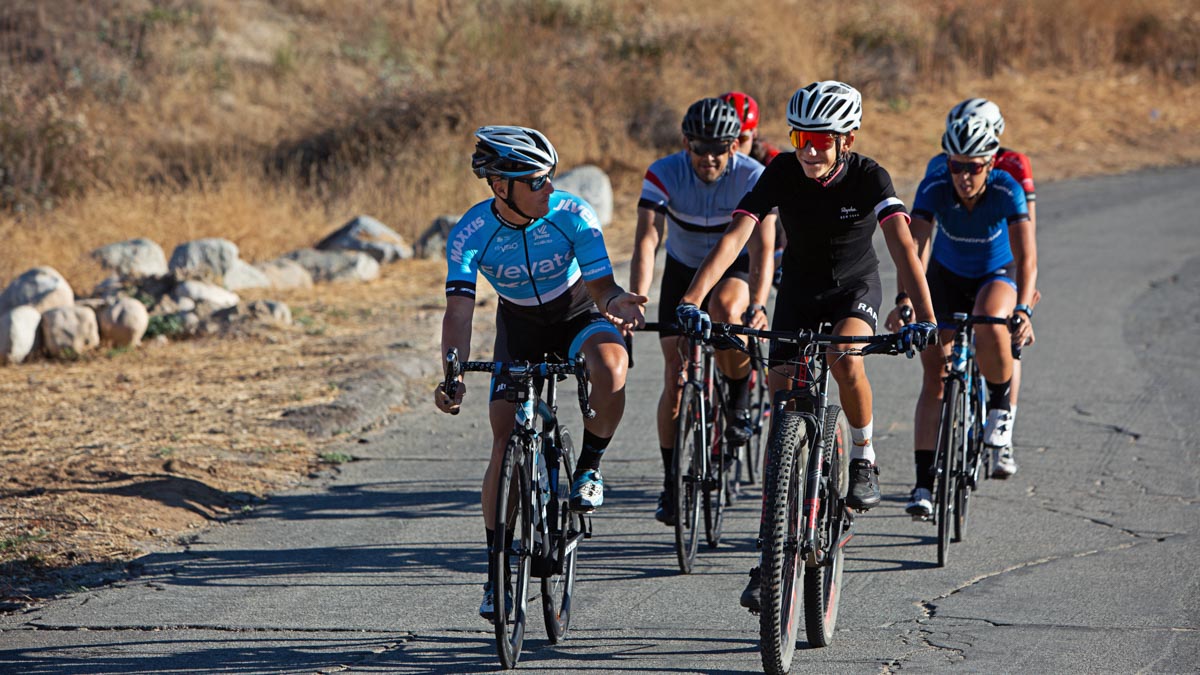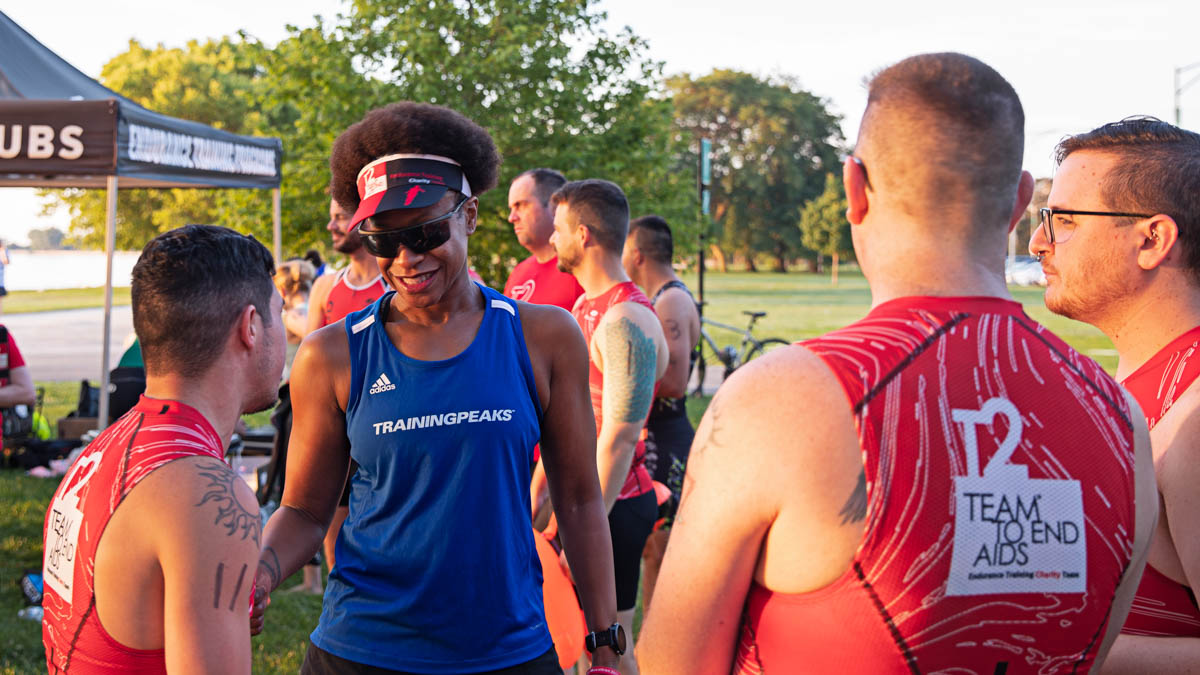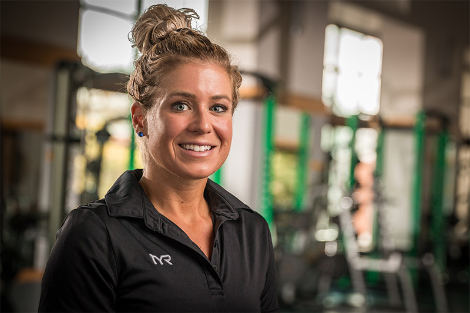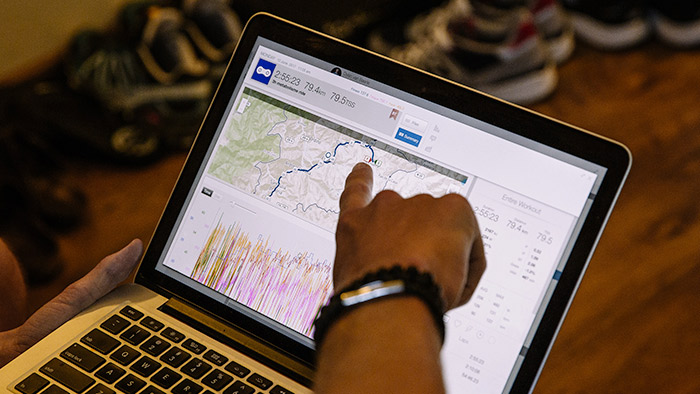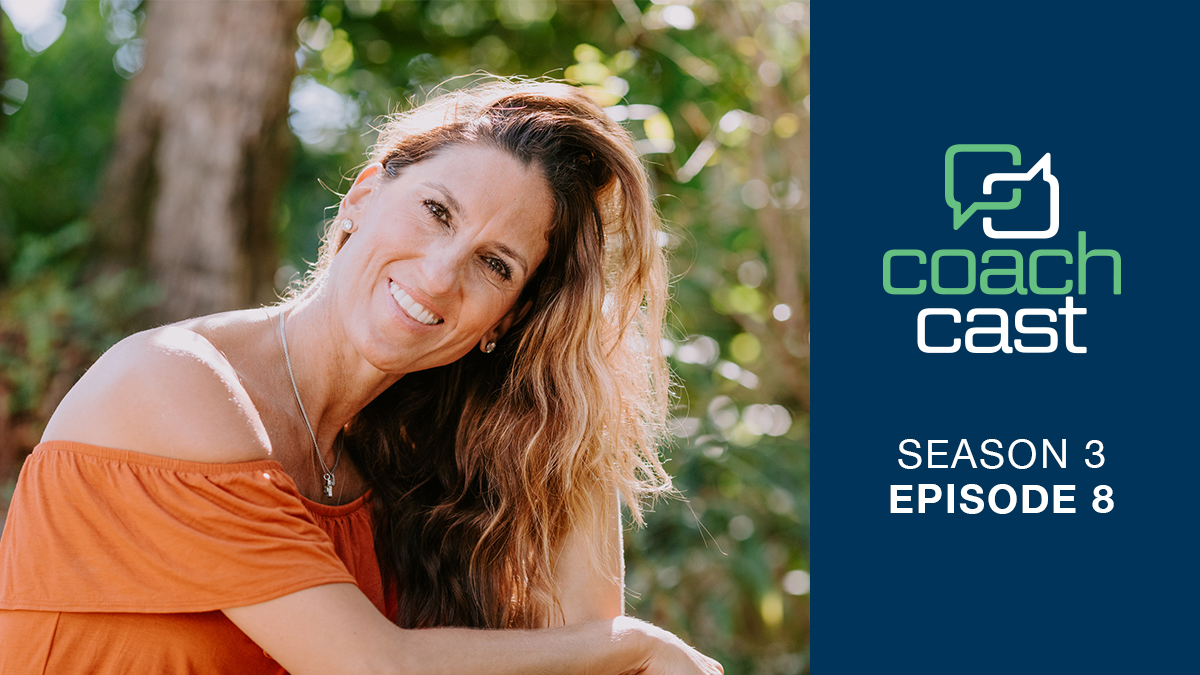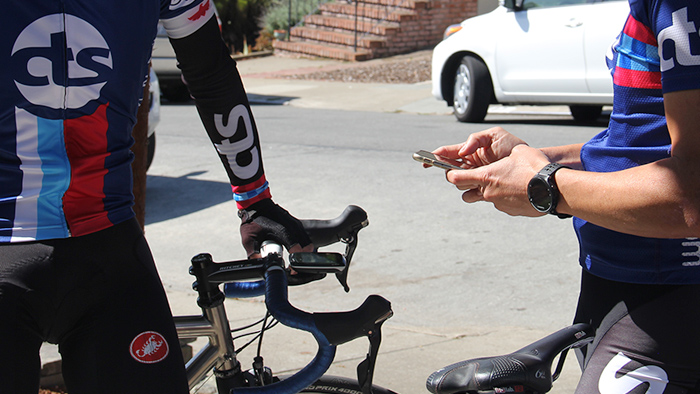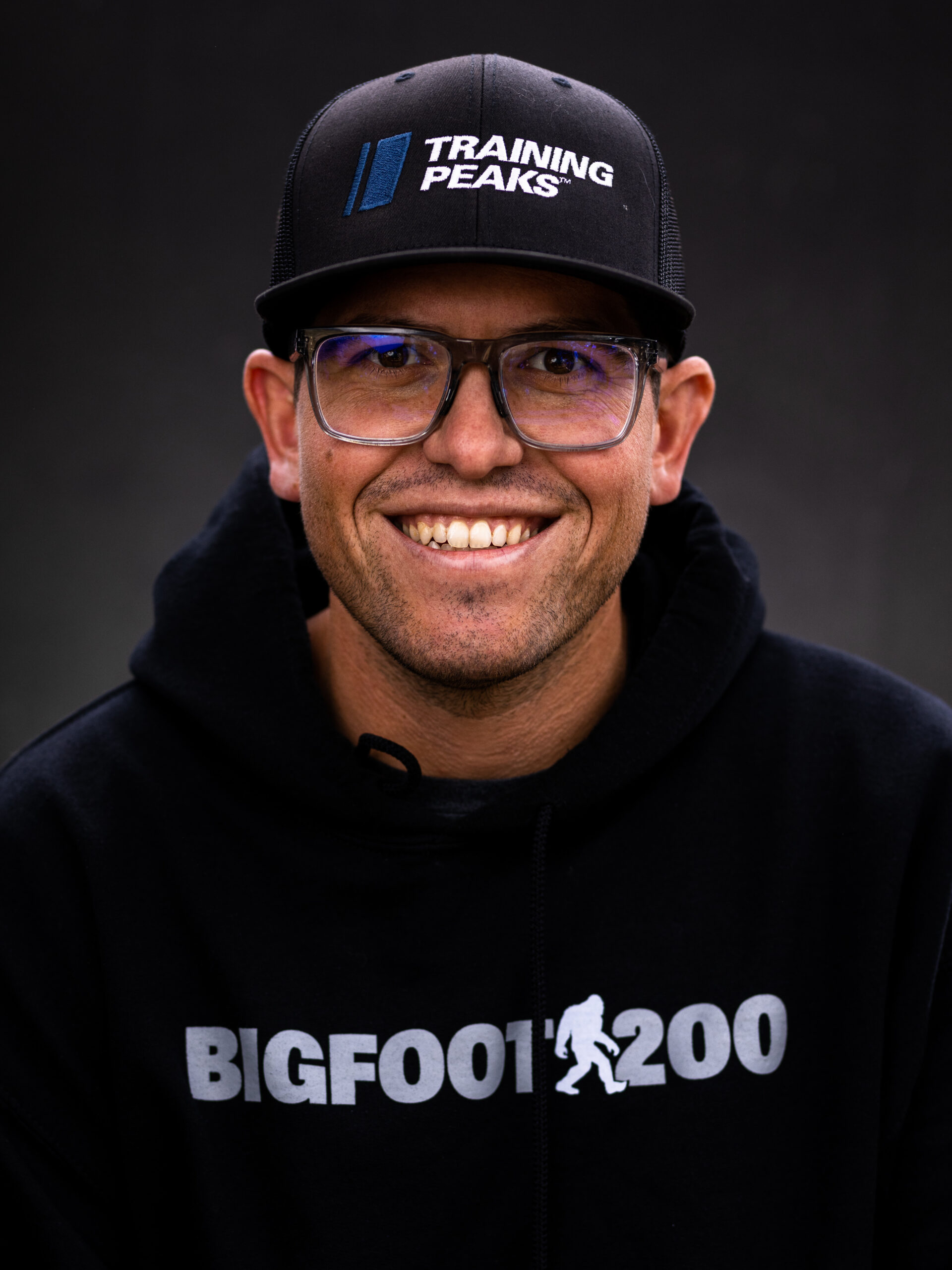TRAININGPEAKS
THE COMPLETE ENDURANCE COACHING BUSINESS GUIDE
Welcome
Growing your own endurance coaching business can feel equally exhilarating and overwhelming—but with the right tools, you’ll be prepared for any challenge. We’re here to help simplify the process, to help you feel more confident on your coaching journey.
In this guide you’ll find advice on creating a sound business plan, managing clients, and marketing your business. Whether you’re already coaching full-time or preparing to grow beyond friends and family, you’ve already taken your first step to success!
Build a thriving coaching business.
Subscribe to the TrainingPeaks Coach Blog for strategies, insights, new research results and expert advice to elevate your athletes’ success.

Building Your Coaching Business

Some coaches thrive while working on the business and administrative aspects of their brands, while others might find it a bit more challenging. Regardless of which camp you fall into, there are some easy steps you can take to set up your business and get ready to grow.
Success Starts with a Business Plan
Many coaches jump in and start coaching friends and family casually without taking the time to think critically about what it means to build a coaching career. Even if you’re still feeling casual about coaching, it can be helpful to plan for the seasons ahead. After all, you always encourage your athletes to strategize beyond their immediate training goals, right?
A business plan is an integral roadmap that outlines:
- Your goals
- The details of how you plan to achieve those goals
- An approximate timeline
A business plan can be simple or detailed, depending on where you are in your company’s growth. The U.S. Small Business Administration offers a few example structures of simple and complex business plans.
The great thing about a solid business plan is that you can always tweak it so it grows with you. Here are the other elements you’ll want to consider to set yourself up for success:
Establish a Mission Statement
Your mission statement should consist of a concise, action-oriented statement about your company’s values. Imagine a stranger coming up to you on the street and asking what your business is all about. You should be able to tell them what exactly your business is and what the core functions are. Think of an elevator pitch. It’s best to use simple language that highlights where you see your business going in the foreseeable future.
Here are a few questions to ask yourself as you are brainstorming your mission statement.
- What are three things that make me stand out from other coaches?
- What problems do I find myself solving for others consistently?
- What kind of advice do people ask me for?
- What skills do I have that make me successful at what I do?
If you find it challenging to think about yourself critically, you can always ask colleagues, teammates or clients to share some insight into their experiences with you.
A mission statement needs to hinge on some sort of action and some result(s).
Mission Statement Template
“I [insert verb] [target audience] so that [target result(s)].”
Here is an example Business Coach Katie Whidden wrote:
“I help high-performing business owners in the fitness industry own their value
and charge their worth so that they can create a business that fulfills their vision.”
Standout from Other Coaches
Once you’ve established a succinct mission, it’s time to identify your niche. This is one of the most important things to consider as a small business founder. After all, it’s relatively easy to create “just another coaching business,” but in order to achieve success, you need to identify the unique thumbprint your business will leave on a busy landscape.
Don’t be afraid to get really specific, even if it means leaving some potential clients behind. If you offer the very best solution to a specific problem, clients will prefer your solution every time, rather than seeking out a jack-of-all-trades.
The next step is to identify what you’re going to sell and how much it will cost. The great part about this section is that it can change as your business grows and evolves, so don’t worry about boxing yourself in if you’re only able to limit a handful of services upfront.
Some common product services you could offer are: One-on-one coaching, group coaching, nutritional services, sports psychology coaching, virtual rides, training plans, etc.
Before you set pricing for each of your services, it’s essential to do market research to inform what you should be charging. If you’re just getting started, you might need to come to the market at a lower price point so you can establish your name and reputation. If you already have solid footing, then you can lean on client testimonials and word-of-mouth to warrant a higher price point. Any additional education and accreditation will also allow you to charge a premium.
Complete a Financial Analysis
We know it’s not easy to get a business off the ground, so objectively evaluating your upfront costs will put the feasibility of your business in perspective.
It’s important to take time to answer the tough questions, including:
- How much do you need to get started?
- What will your costs be?
- How much do you need to break even?
- What do you project to make?
Even if you’re not planning on going full-time, it’s important to run the numbers so you’re not surprised by an expense. If you are planning on full-time coaching, it’s essential you have at least a rough idea of what it’s going to take to make the business financially viable. There are a number of online resources to help small businesses conceptualize their costs of doing business. This interactive worksheet from the Small Business Administration is a good place to start.
It’s also helpful to think about other team members that you may add in the future or are considering adding now. Do you need to work with a nutritionist? Do you need a strength training expert or sport psychologist? If your business took off and you were able to hire your dream team, what would that look like?
Note that these additional team members do not necessarily need to be full-time or even part-time employees. They can be other businesses, collaborators or partners with whom you develop mutually beneficial relationships.
One strategy, so that you stay on track with business growth, is to choose specific profit-related mile markers or indicators so you remember when to expand the team. Make note of those so you don’t ever feel too overwhelmed trying to take care of everything yourself.
Bookkeeping and Customer Relationship Management
Bookkeeping and administrative work might not be as thrilling as setting up the perfect annual training plan, but it is equally as important to your business. If you’re starting small, it’s easy to use basic tools to manage your finances, meetings and accounting. But it’s best practice to prepare for future growth and set yourself up with tools that scale with you. This is where a robust customer relationship management (CRM) system will help tremendously.
A CRM is a piece of software that helps you to organize and even automate many of the activities connected to your athletes.
Most CRMs can help you:
- Maintain a client list with contact details
- Set up meetings with helpful reminders
- Generate basic reports about the performance of your business
- Integrate with other tools such as email marketing and social media
CRMs are generally priced per user per month and come in a variety of price points depending on your required functionalities and the number of users. Here are a few examples of CRMs that will best serve endurance coaches.
| CRM | Key Functionalities |
|---|---|
| Capsule.com | Easy to use – Customizable (without coding or IT help) – Automated workflows & email follow-ups |
| Pipedrive | Track calls, emails & contact history – 150+ advanced integrations – Can grow with you depending on business size |
| HubSpot | Free version for small businesses – Easy to use dashboard for managing leads – Free live chat and meeting scheduling features |
| Capsule | Very simple to use – Multiple user-friendly sales dashboards – Create, import & manage all of your contacts |
| MindBody | Fitness/Wellness industry-specific – Marketing campaign builder tool |
Understanding the Legal Aspects of Owning a Business
Once you have a solid understanding of your business goals, offerings and have a CRM in place, you should take the time to connect with a tax consultant or lawyer to make sure your business is set up correctly. This includes choosing your business type, getting registered, and sorting out insurance, accounting and billing.
Choose the Best Business Classification
The primary classifications of business ownership relevant to endurance coaches include: Sole proprietorship, partnership (limited and limited liability), limited liability company (LLC), C corporation, S corporation, B corporation.
| Type | Key Features | Advantages | Disadvantages |
|---|---|---|---|
| Sole Proprietorship | Business assets and liabilities are not separate from personal A & L. | Easy to create. Gives you control. Good option for those just getting started. | Can be held personally liable for business debts and obligations. Can’t sell stock. |
| Partnership (LP & LLP) | Requires more than one owner. | Easy to create with limited paperwork. Taxes are relatively simple. | Same legal risk as a sole proprietorship. LLPs not available in every state. |
| LLC | Retains some of the advantages of sole proprietorship while limiting legal and financial liability. | Popular option for small businesses. Two or more owners can have equal control. | More complex. Greater admin costs and paperwork. |
| Corporation (C, S or B) | Offers the strongest protection from personal liability, but cost to form is higher than other structures. | Can issue stock. Can continue to do business relatively undisturbed if a shareholder leaves or sells shares. | Subject to greater scrutiny than LLCs. Pay income tax on their profits and in some cases on share dividends. Taxes vary depending on the state. |
Insurance and Release Forms for Athletes
As with any small business owner, it’s essential that you’re protected. Endurance athletes are certainly not excluded from risk of injury or illness. Should something happen to one of your athletes, you need to be protected against liability.
If you choose to become certified with a national governing body (NGB) such as USA Cycling or USA Triathlon, they typically will offer coaching insurance at an affordable price. If you decide against pursuing NGB certification and opt for insurance with a third party, many coaches use personal trainer coverage. Here are a couple of different options that our American and British coaches use, respectively: Everest Re Group Ltd. and Sports Cover Direct.
In addition, it’s best to consult with a lawyer first, and draw up a proper release form to have your athletes sign before you start working with them. (We will elaborate about this further in the intake form section.)
How to Bill Your Clients
The easiest option most coaches use to handle their billing is through QuickBooks, but there are many other options for small business owners. They vary widely in pricing and additional features, so it’s worth investing some time in researching the options so that you can find one that best suits your business. Ideally, you should find one that integrates directly with your CRM so you can automatically transfer all of the relevant information.
Additionally, if you apply and are accepted into our Coach Match Program we will handle athlete billing for you.
In general, the financial challenge for most businesses is keeping track of everything. For internal expenses, having a separate checking account and credit card for your business is essential.
Keeping track of each expense will help you receive the maximum number of tax deductions. You should consult a tax professional to know when — and exactly how much — you’re required to pay the government.
FURTHER READING

Business Education Course for Coaches
If you’re interested in diving deeper into the fundamentals of building a coaching business, TrainingPeaks University is a great option. Check out our Introduction to Business for Endurance Coaches course in order to learn more about finding athletes, building your brand and mastering digital marketing.
Managing Your Endurance Athletes
Once you’ve built a solid business plan, you’re ready to take on coaching clients. In this section we’ll cover client onboarding, data management, and communication. These simple organizational steps will help your athletes stay connected and allow you do to what you do best: coach!
Let’s talk about coaching: what you came here to do!
There are three primary components to creating a healthy and sustainable coaching business:
- Onboarding new clients
- Supporting your current clients
- Managing your time
As a business owner, it’s up to you to instill a healthy balance between these three components so that each athlete feels cared for and you avoid burnout. Stretching yourself too thin or neglecting potential clients will impose unnecessary strain on your business.
If you remain organized and diligent on these best practices, you will achieve sustainable business growth.
How to Onboard New Clients
You can’t have a coaching business without athletes, so having an easy-to-use system set in place to onboard new athletes will help create seamless, sustainable growth. While the necessary documents may vary by county, state and country, there are some forms that are common practice.
Basic Paperwork
First, you’ll want to have the athlete sign a service agreement outlining what services you will provide, at what price, and set expectations from the outset. Some common things included in this agreement are communication frequency, how often they can expect data analysis, price and your expectations of them as athletes.
Next, you’ll want to review any optional add-ons they can choose from such as nutrition advice, bike fitting or special one-on-one form evaluation sessions.
Finally, you should consider having the athlete sign a liability waiver stating that they are healthy enough to participate in an exercise program and releasing you of any liability should anything happen. Even if you have an athlete sign a waiver, it is still good practice to carry liability insurance as we described in the insurance/release forms section.
Intake Form
One of the best tools that will keep the paperwork-gathering process clean and organized is a proper intake form. These forms can come in a variety of formats (PDF, Word doc, online survey, etc.) depending on your needs. This is a great way to get all of the info you need at once, rather than having to dig for it later in a chain of emails.
A good intake form will be relatively easy to complete (think less than 15 minutes), but should gather a clear snapshot of your athletes’ current abilities and aspirations. Here are a few topics you should cover in your intake form:
- General Information: Date of birth, weight, job, emergency contact, current location, contact details, doctor’s name and contact info
- Health Status: Current and previous injuries, health conditions, diet, allergies, birth control, medications
- Availability: Preferred time (days of week and time of day) to train, preferred days off, annual travel/holidays, family and/or work obligations, communication preferences
- Goals and Aspirations: Immediate and long-term goals, preferred sport types, brief summary of gear, strengths and weaknesses.
A well-constructed intake form is a great asset to your business because it allows you to gather a lot of information about your athletes and keep it organized. Depending on your relationship with the athlete, you may want to consider setting up a yearly reminder to refresh this information at the end of their racing season so you’re ready to go the following year.
Get Connected and Gather Data
After you have completed all of the necessary paperwork, invite them to connect to your TrainingPeaks coach account. Open your athlete library and click “+ Athlete” and then copy and paste the link into an email. When the athlete clicks the link they will be prompted to log into their existing TrainingPeaks account, or create a new account.
Depending on the level of service you plan to offer and how involved the athlete will be in their training, you may opt for a Premium Athlete account to give them full access to TrainingPeaks’ tools.
If the athlete has been tracking and recording their training with a device but not using TrainingPeaks, then the next step is to import that data into their account. If they have been tracking their training with a major third-party device, like Garmin, then they can connect their accounts to sync all of their historical data.
If they have not been recording their workouts with a major third party device, then you still may be able to get their data into TrainingPeaks by exporting the files from the site they have been using and then dragging and dropping those files onto their calendar in TP to perform a bulk upload.
Going forward, if possible, help your athlete set up Auto Sync integrations from their device to TrainingPeaks so you never miss a workout file.
Once you have connected to your athletes and helped them set up their devices, you can review their training data, set their thresholds and zones and configure other training and account settings together. If your athletes are due for a fresh functional threshold power test, this article offers great options for swimming, biking and running.
Supporting Current Clients
According to TrainingPeaks coaches, the majority of their time is spent planning and reviewing their existing athletes’ workouts. A good general breakdown could look like:
- Communicating with athletes and planning their training (50%)
- Conducting general run-of-business and admin work (25%)
- Marketing and seeking out new clients (25%)
Without blocking out enough time to plan and review athlete calendars, it’s easy to get disorganized and off track. Here’s a common planning/workout review schedule, assuming Monday is the first day of the week.
Example Week
Monday: Workout reviews
Tuesday: Respond to feedback from workout reviews, incorporate schedule adjustments
Wednesday: Plan future blocks
Thursday: Run of business/marketing
Friday: Athlete communication/marketing
Saturday: Off/flex day
Sunday: Flex day/quick follow up on athletes’ races
Our capacity for true, creative work every day is very limited. Plan to block off the time of day when you’re the most focused and energetic to work on the most difficult and demanding tasks.
For example, athlete communication and workout building are very mentally demanding. They are also major determinants of coaching quality and reputation. These are great tasks for you to prioritize.
Your schedule can vary wildly depending on the time of the year, but maintaining some balance and not allowing any one aspect of your business to fall to the wayside will help you continue to grow.
Creating a Team
Expanding your coaching business can be one of the most rewarding accomplishments as a professional coach. Bringing qualified and enthusiastic coaches on board not only opens your business up to more potential clients, but it also transforms the culture of your company.
There are many aspects to consider before you start hiring other coaches. Adding other coaches will allow you to scale your business quickly if you do it correctly.
Your first step is to take time and create as detailed a plan as possible. Make sure your best practices and processes are dialed in for smooth operations. If you are disorganized now offering one service, it will be difficult to clean things up if you add more.
If you want to add an assistant on TrainingPeaks, you will each need your own TrainingPeaks Coach Edition account. If you or your assistant do not currently have a TrainingPeaks Coach account, you can sign up here.
To add an assistant coach, please submit a support request and include:
- The usernames for both accounts.
- The name of who paid the $99 license fee for the assistant account.
- If the monthly billing should be combined into one bill or kept separate.
Time Management
The last and possibly most important aspect of creating a sustainable coaching business is managing your time wisely. There are a handful of ways to save time and segment your availability so you pay adequate attention to each aspect of your business.
Using a CRM will help you stay on track with bookkeeping and administrative work. In addition, there are a variety of other tools such as meeting schedulers and task management software that will help you stay on track. If you’re more of a traditionalist who prefers pen and paper, that’s fine too. The most important thing is that whatever system you choose can easily grow with you.
One last thing to consider as you move through your coaching journey is work-life balance. Just like your full-time working athletes, striving to do it all can present a slippery slope of burnout.
Strive to adhere to the advice you would give them. Carve out clear lines between work, personal engagements and your own training. Reduce distractions and establish a quiet environment. This will keep your brain happy and your business thriving.
The more organized you are with your time, the less likely you will get caught up in unproductive or unnecessary tasks that hinder progress towards your goals. Just as you would advise your athletes to avoid “junk miles” in their training, strive to avoid deviating time to “junk tasks.”
FURTHER READING
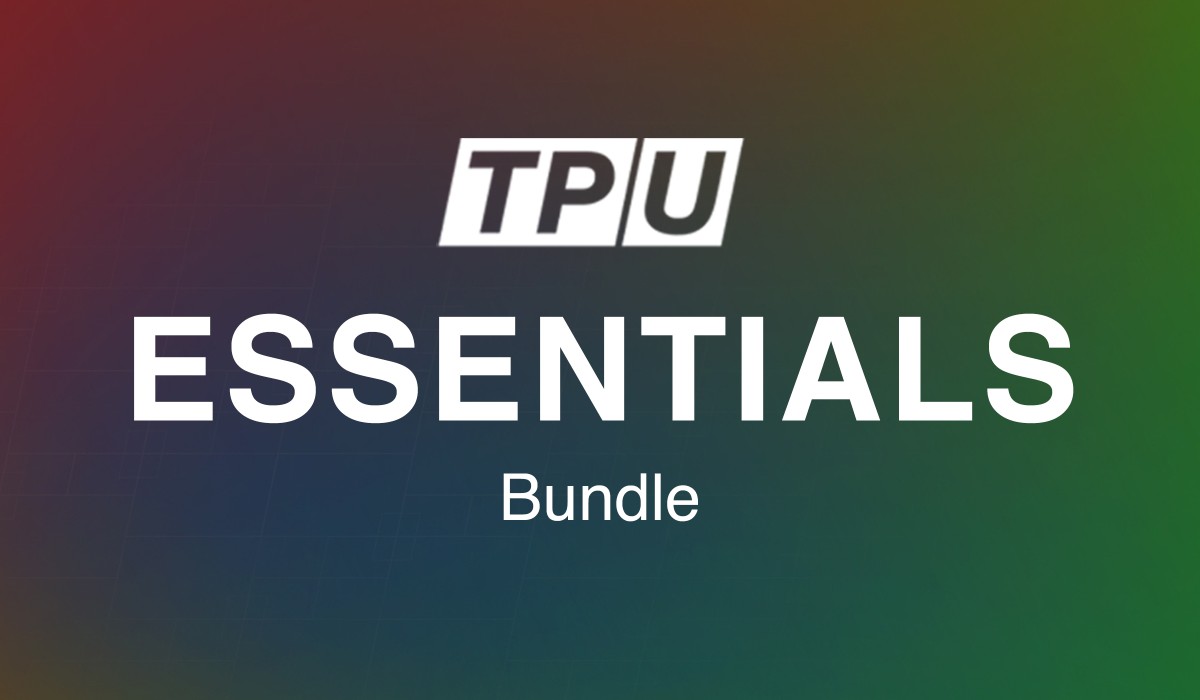
Continuing Education for Coaches
If you’re interested in diving deeper into creating an efficient coaching system, TrainingPeaks University is a great option. Check out our Essentials course where you will learn more about finding athletes, building your brand and mastering digital marketing.
Building a Coaching Business Website
Word-of-mouth promotion is highly effective, but establishing your digital presence can add just as much value if done correctly. Creating your own website is a great place to start. It may require some upfront time investment, but it will pay off in the long run with more engaged clients and greater revenue.
Essential details to include on your coaching website are:
- Your certifications and licenses
- Pricing levels
- Testimonials (if you have them)
- A clear way for people to contact you directly from the site.
Websites can be expensive, so do your research when deciding on a platform. Some of the most popular options for DIY website builders include Wix, Squarespace and WordPress. If you’re less comfortable designing your own site, consider doing a trade: Offer your services in exchange for setting up a website!
As your setting up your domain name (address) keep in mind that it should be short, easy to spell, and include as few numbers and hyphens as possible. The more memorable it is, the less Googling potential athletes will have to do to find you. For additional details on setting up a website for your coaching business, this article from Forbes has great information.
Email Marketing for Coaches
You can use email to sell your services, engage with existing customers, or provide helpful content to your current or prospective users. The most effective campaigns rely on regularly updated customer lists, goal-oriented messaging, great content and effective calls-to-action.
Here are a few benefits of email marketing:
- It’s free or relatively inexpensive. MailChimp or Sendgrid are two great options for small businesses with sliding pricing structures based on customer list size. Most email marketing services offer helpful tools such as free templates and email best practice advice.
- Email is the gold standard of online communication. It’s highly likely all of your potential customers have an email address, and are willing to share it with you if they think they can gain some value. In fact, small to medium-sized business owners say that email marketing has driven acquisition and retention of customers at rates of 81% and 80%, respectively. Email marketing is far ahead of other much-discussed marketing methods such as social media, which hovers around 50%, according to the same survey from eMarketer.
- It can help you reach your audience, regardless of where they are in the sales funnel. Whether you are courting a new athlete or aiming to improve retention of existing ones by providing more regular, value-oriented information, email marketing is a great way to accomplish your goals.
Athlete-Focused Content Creation
When it comes to sharing and creating content with your audience, you should always focus on providing value for the athletes, not trying to sell something to them. Everyone can relate to the feeling of being constantly inundated with ads.
Generally speaking, quality training content does one (or some combination) of three things: It entertains, informs or inspires. Providing consistent value to your audience will build trust in your brand and keep your athletes engaged.
Content can come in a variety of forms. It can take the form of a concise blog post, an educational podcast, a long-form study, website content explaining the value of your services, or testimonials from your team.
Visual content and video content are other great options. For example, you can share finish line photos of your current athletes through a weekly newsletter or you can record a video of you demonstrating proper swim form and share it through YouTube.
While investing time and energy into creating content may not seem like it is yielding direct value to your business, it’s important to remember that content is a longer-term strategy.
Engaging and informing your current athletes in this way will improve your retention as it shows them the extra value they gain from working with you — ultimately setting you apart from other coaches.
For prospective athletes, creating content establishes your credibility as an expert, and if your content is high quality, people will organically share it on their own, thus doing some of the marketing heavy lifting for you. This type of marketing, called inbound marketing, creates positive awareness about your brand and who you are as a coach.
If you want to view examples of curated blog content, check out the TrainingPeaks Coach Blog and Athlete Blog.
The Benefits of Social Media
Social media is one of the most powerful ways to reach athletes. More than 4.2 billion people are on Instagram, Facebook and Twitter. More than 80% of those users discover new brands through social media.
As a coach, there is a ton of marketing value you can gain from having a social media presence. Not only does posting help your brand stay top-of-mind, but it also allows you to get to know your athletes and interact with them without expending too much effort.
The key to effectively managing your social presence can be summed up in one word: Consistency.
Consistently posting compelling content — and not flooding your audience and then disappearing for months — will help establish trust, value and will snowball interest in your profiles.
Set time aside to post content at least twice a week, on all platforms. Depending on your audience, the best time and day to post will vary. As a general rule of thumb, posting before 3 p.m. on weekdays and avoiding Saturdays can be helpful — but don’t let that limit your natural flow.
If you want to dive deeper into what the latest data says about strategic posting times, Sprout Social keeps an up-to-date account of the year-over-year trends.
If you struggle to remember to post at a certain time each week, automation tools can make your life much easier. While Facebook offers scheduling in advance for business profiles, Instagram and Twitter cannot be scheduled if you are posting natively from the platform.
By using an aggregator platform such as Hootsuite or Tweetdeck, you can schedule your posts for all three platforms and simply spend a few hours a week planning for the days to come. If you do choose to schedule using a third-party tool, remember to check your posts for comments and to stay engaged with your athletes.
One of the common questions coaches ask is if they are missing out by not advertising on social media. Luckily, most small business owners don’t need to stress. Unless you are a social media expert and have substantial marketing resources to burn, it’s unlikely that you need to turn to paid ads to grow your presence on social media.
Here are a few strategies to organically grow your social media accounts:
- Include your handles in your email signatures and footers. Many email services such as Mailchimp or Sendgrid offer a template for you to plug in your corresponding social icons and links. You can also call out a specific channel in your emails and encourage your subscribers to follow you on social media.
- Build your reputation and following by connecting with relevant groups or hashtags. For example, the TrainingPeaks Coach Community and the Pain Cave group allows coaches and athletes to connect with each other and ask questions. On Instagram and Twitter, you can follow and interact with hashtags relevant to your coaching focus, such as #marathontraining and #tricommunity. Additionally, when posting to social media, always include a few key hashtags to surface your content to people outside of your immediate followers.
- Never underestimate the power of a partnership. Reach out to your connections such as other coaches, event organizers or even your own athletes to collaborate on content. Popular social content formats include hosting a live Q&A on Facebook or Instagram, running a contest in association with another brand, or featuring someone else on your channel. Regardless of the content, always ensure you are tagging other profiles — and are being tagged — to grow your reach and allow your content partner to reshare your posts and vice versa.
Keep in mind, not everything will go viral. Like content generation, social media is a slow-burn strategy. You are cultivating a community and serving as a resource for your athletes and potential clients so stay consistent, post creatively and have fun.
FURTHER READING

Business Marketing Course for Coaches
If you’re interested in diving deeper into marketing your coaching business, TrainingPeaks University is a great option. Check out our Marketing Basics for Coaches course in order to learn more about building a marketing list, creating a marketing plan and task management.



